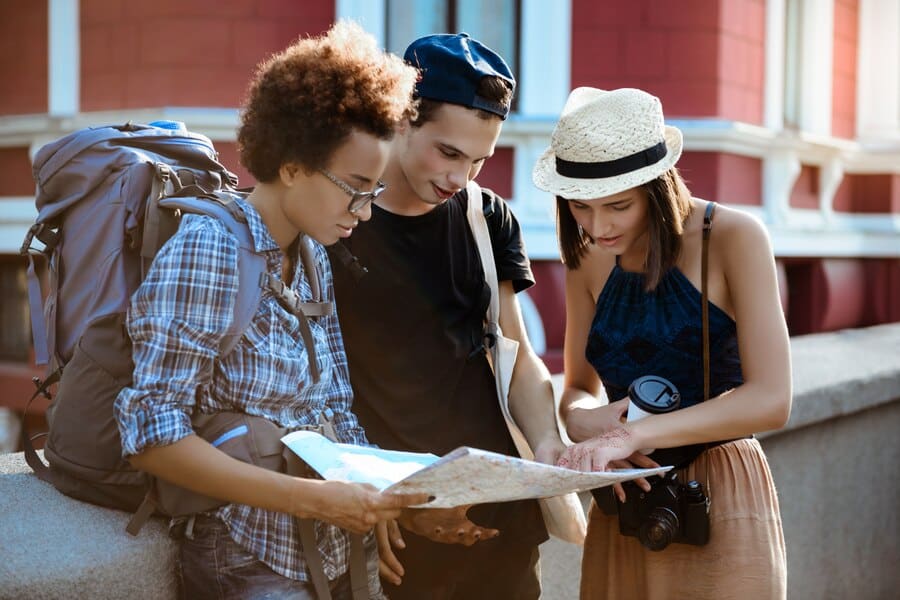Traveling has long been associated with sightseeing and ticking off destinations from a bucket list. However, a growing number of travelers are shifting their focus towards cultural immersion—a more enriching approach that emphasizes learning through local experiences. This form of travel allows individuals to engage deeply with the cultures they encounter, fostering connections that transcend mere observation.
The Essence of Cultural Immersion

Cultural immersion is about experiencing a destination through the eyes of its locals. It involves actively participating in daily life, traditions, and customs rather than merely observing them from a distance. This engagement can take many forms, from sharing meals with local families to participating in traditional festivals or learning local crafts and cooking techniques.
1. Engaging with Local Communities
At the heart of cultural immersion is the desire to connect with people. Travelers can choose to stay in homestays or local accommodations, providing them with a unique opportunity to share meals and stories with their hosts. This interaction not only enriches the travel experience but also fosters a sense of belonging and understanding.
2. Learning Through Participation
Participatory tourism is a key aspect of cultural immersion. Instead of being passive observers, travelers can engage in activities such as cooking classes, craft workshops, or agricultural work. For instance, learning how to make traditional dishes like Pad Thai in Thailand or joining a family in Peru for a day can create lasting memories and skills that travelers carry home.
3. Celebrating Local Traditions
Attending local festivals is another vibrant way to immerse oneself in a culture. Events like India’s Holi festival or Brazil’s Carnival offer travelers an opportunity to experience the joy and vibrancy of local traditions firsthand. By joining in these celebrations, travelers become part of the community’s collective memory.
4. Breaking Language Barriers
While fluency in a local language may not be necessary, making an effort to learn basic phrases can significantly enhance interactions with locals. This effort is often met with appreciation and can lead to deeper conversations and connections.
The Benefits of Cultural Immersion
Cultural immersion offers numerous benefits beyond personal enjoyment:
- Enhanced Understanding: Engaging directly with different cultures helps break down stereotypes and fosters empathy.
- Skill Development: Travelers often leave with new skills—be it cooking techniques, artistic abilities, or even language proficiency.
- Lasting Memories: The connections made during immersive experiences often lead to cherished memories that last a lifetime.
Conclusion: Embrace the Journey
Cultural immersion transforms travel from a simple act of visiting places into an enriching journey of discovery and connection. By embracing local experiences, travelers not only learn about different cultures but also contribute positively to the communities they visit. This approach fosters mutual respect and understanding among diverse populations, making the world feel smaller and more interconnected.As you plan your next adventure, consider how you can immerse yourself in the local culture—whether through food, festivals, or meaningful interactions—and create memories that resonate long after your journey ends.
Frequently Asked Questions
1. What is cultural immersion?
Cultural immersion involves engaging deeply with the culture of a place by participating in local customs, traditions, and daily life.
2. How can I immerse myself in a culture while traveling?
You can immerse yourself by staying with locals through homestays, participating in cooking classes or workshops, attending local festivals, and learning basic phrases of the local language.
3. Why is cultural immersion important?
Cultural immersion enriches your travel experience by fostering connections with locals, breaking down stereotypes, and enhancing your understanding of diverse cultures.
4. Can I find cultural experiences near my home?
Yes! Cultural experiences can be found locally through ethnic markets, community events, or cultural festivals celebrating different heritages.
5. What are some examples of participatory tourism?
Examples include volunteering on farms, taking craft workshops, joining cooking classes, or participating in local community events.
6. How do I choose the right cultural experiences?
Consider your interests—whether they are culinary arts, arts and crafts, or history—and research activities that align with those passions in your destination.
7. Is language proficiency necessary for cultural immersion?
While not required, learning basic phrases can enhance interactions and show respect for the local culture.
8. Are cultural immersions suitable for families?
Absolutely! Many cultural experiences are family-friendly and provide opportunities for children to learn about different ways of life.
9. How do I find authentic cultural experiences?
Look for recommendations from travel blogs, local tourism boards, or platforms that specialize in immersive travel experiences.
10. What should I keep in mind when participating in cultural activities?
Be respectful and open-minded; understand that you are a guest in someone else’s culture and approach all experiences with curiosity and humility.

